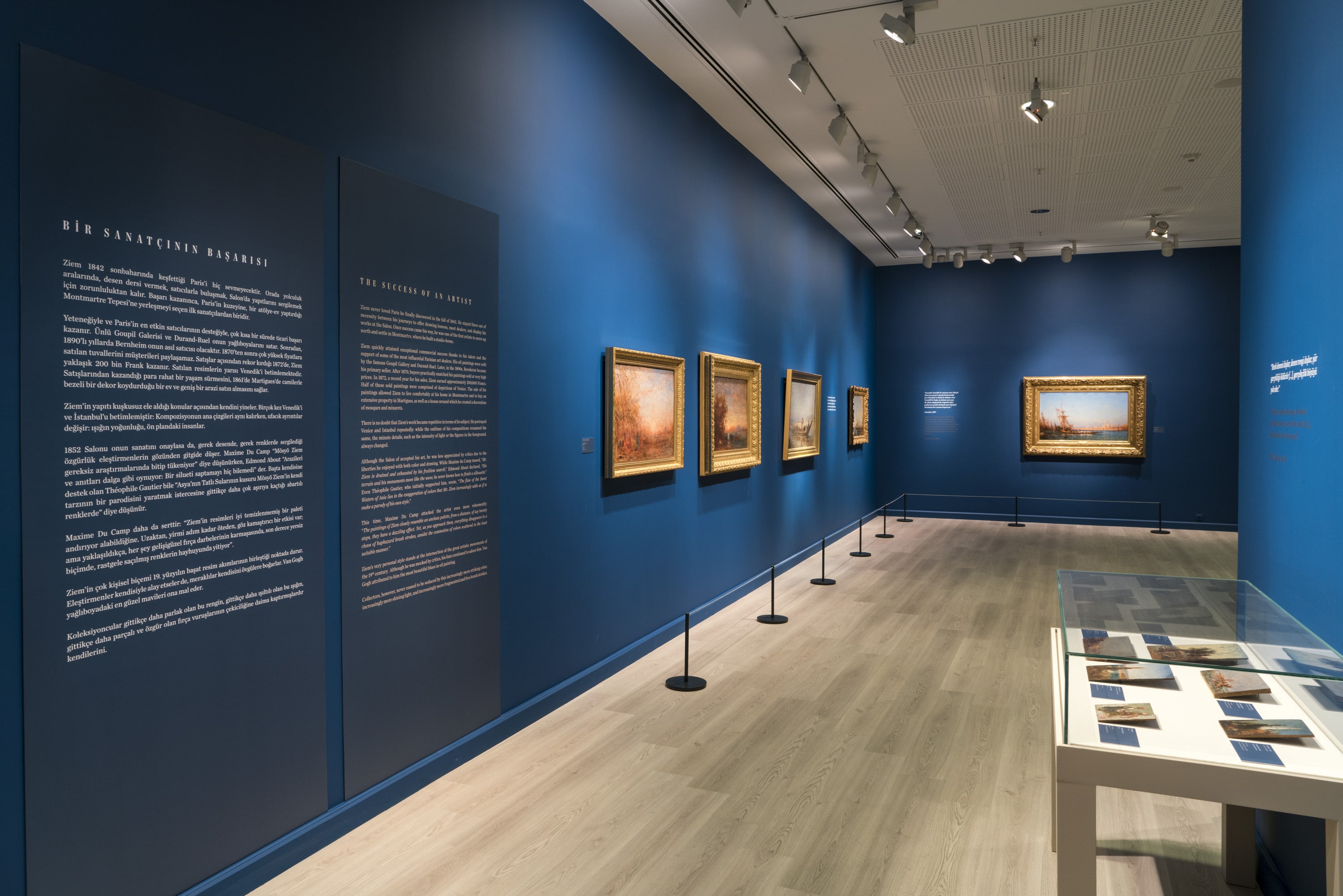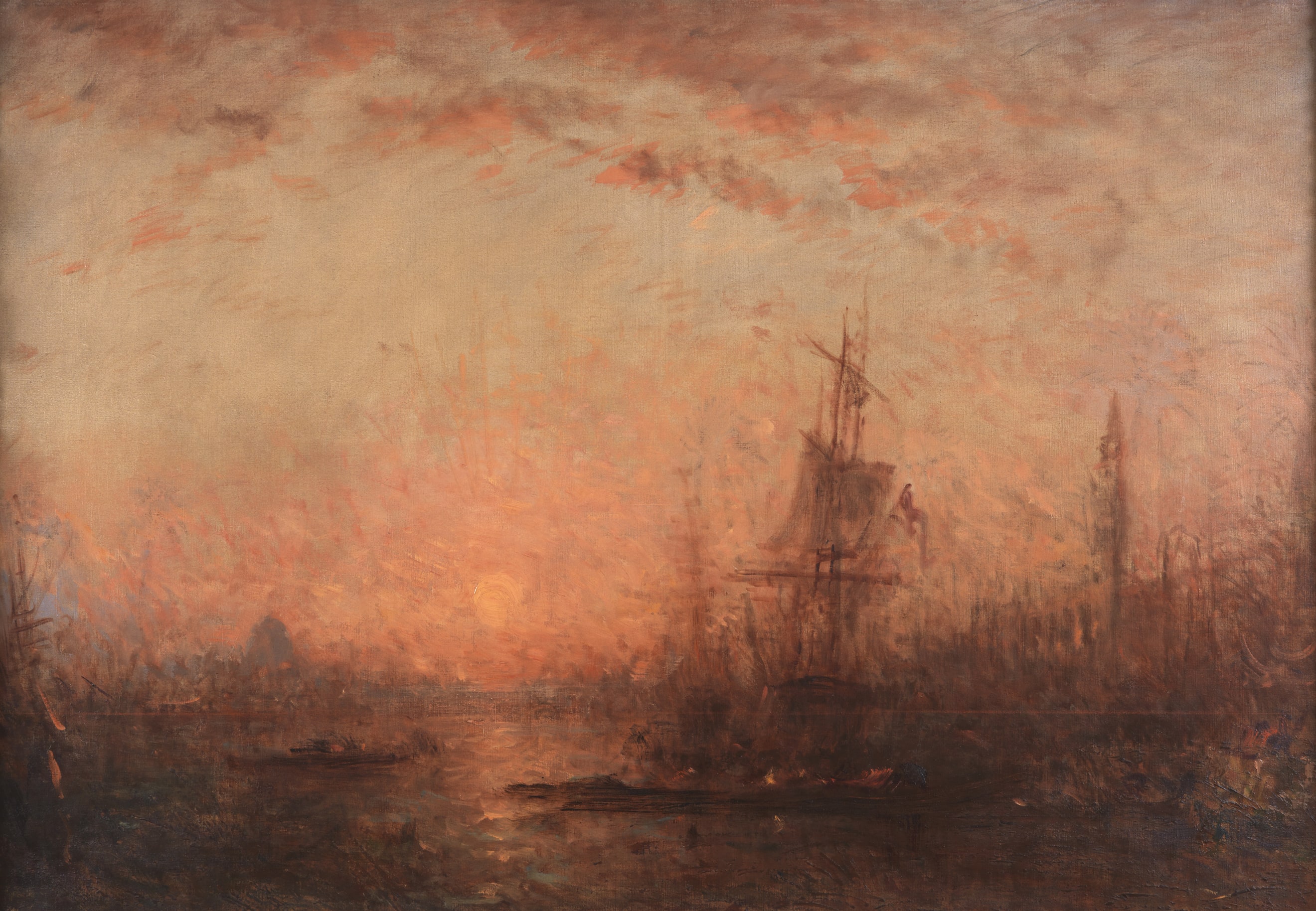12 January 2017

Pera Museum presents an exhibition of French artist Félix Ziem, one of the most original landscape painters of the 19th century. The exhibition Wanderer on the Sea of Light presents Ziem as an artist who left his mark on 19th century painting and who is mostly known for his paintings of Istanbul and Venice, where the city and the sea are intertwined. Through the exhibition, we will be sharing detailed information about the artist and the artworks.
Ziem never loved Paris he finally discovered in the fall of 1842. He stayed there out of necessity between his journeys to offer drawing lessons, meet dealers, and display his works at the Salon. Once success came his way, he was one of the first artists to move up north and settle in Montmartre, where he built a studio-home.

Ziem quickly attained exceptional commercial success thanks to his talent and the support of some of the most influential Parisian art dealers. His oil paintings were sold by the famous Goupil Gallery and Durand-Ruel. Later, in the 1890s, Bernheim became his primary seller. After 1870, buyers practically snatched his paintings sold at very high prices. In 1872, a record year for his sales, Ziem earned approximately 200,000 Francs. Half of these sold paintings were comprised of depictions of Venice. The sale of his paintings allowed Ziem to live comfortably at his home in Montmartre and to buy an extensive property in Martigues, as well as a house around which he created a decoration of mosques and minarets.
There is no doubt that Ziem’s work became repetitive in terms of its subject. He portrayed Venice and Istanbul repeatedly: while the outlines of his compositions remained the same, the minute details, such as the intensity of light or the figures in the foreground, always changed.
Although the Salon of accepted his art, he was less appreciated by critics due to the liberties he enjoyed with both color and drawing. While Maxime du Camp mused, “Mr. Ziem is drained and exhausted by his fruitless search,” Edmond About declared, “His terrain and his monuments move like the wave; he never knows how to finish a silhouette.” Even Théophile Gautier, who initially supported him, wrote, “The flaw of the Sweet Waters of Asia lies in the exaggeration of colors that Mr. Ziem increasingly adds as if to make a parody of his own style.”
This time, Maxime Du Camp attacked the artist even more vehemently:
“The paintings of Ziem closely resemble an unclean palette; from a distance, of say twenty steps, they have a dazzling effect. Yet, as you approach them, everything disappears in a chaos of haphazard brush strokes, amidst the commotion of colors scattered in the least suitable manner.”

Canal Grande with Campanile at Setting Sun, Second half of the 19th century, Oil on canvas, 84 x 117 cm., Musée Ziem Collection
Ziem’s very personal style stands at the intersection of the great artistic movements of the 19th century. Although he was mocked by critics, his fans continued to adore him. Van Gogh attributed to him the most beautiful blues in oil painting.
Collectors, however, never ceased to be seduced by this increasingly more striking color, increasingly more shining light, and increasingly more fragmented and free brush strokes.
Félix Ziem: Wanderer on the Sea of Light exhibition took place at Pera Museum between 10 November 2016 and 29 January 2017.

Pera Museum presents an exhibition of French artist Félix Ziem, one of the most original landscape painters of the 19th century. The exhibition Wanderer on the Sea of Light presents Ziem as an artist who left his mark on 19th century painting and who is mostly known for his paintings of Istanbul and Venice, where the city and the sea are intertwined. Through the exhibition, we will be sharing detailed information about the artist and the artworks.

Félix Ziem is accepted as one of the well-known artists of the romantic landscape painting, and has been followed closely by art lovers and collectors of all periods since. He had a profound influence on generations of artists after him, and was the first artist whose works were acquired by the Louvre while he was still alive.

French artist Félix Ziem is one of the most original landscape painters of the 19thcentury. The exhibition Wanderer on the Sea of Light presents Ziem as an artist who left his mark on 19th century painting and who is mostly known for his paintings of Istanbul and Venice, where the city and the sea are intertwined.
Tuesday - Saturday 10:00 - 19:00
Friday 10:00 - 22:00
Sunday 12:00 - 18:00
The museum is closed on Mondays.
On Wednesdays, the students can
visit the museum free of admission.
Full ticket: 300 TL
Discounted: 150 TL
Groups: 200 TL (minimum 10 people)